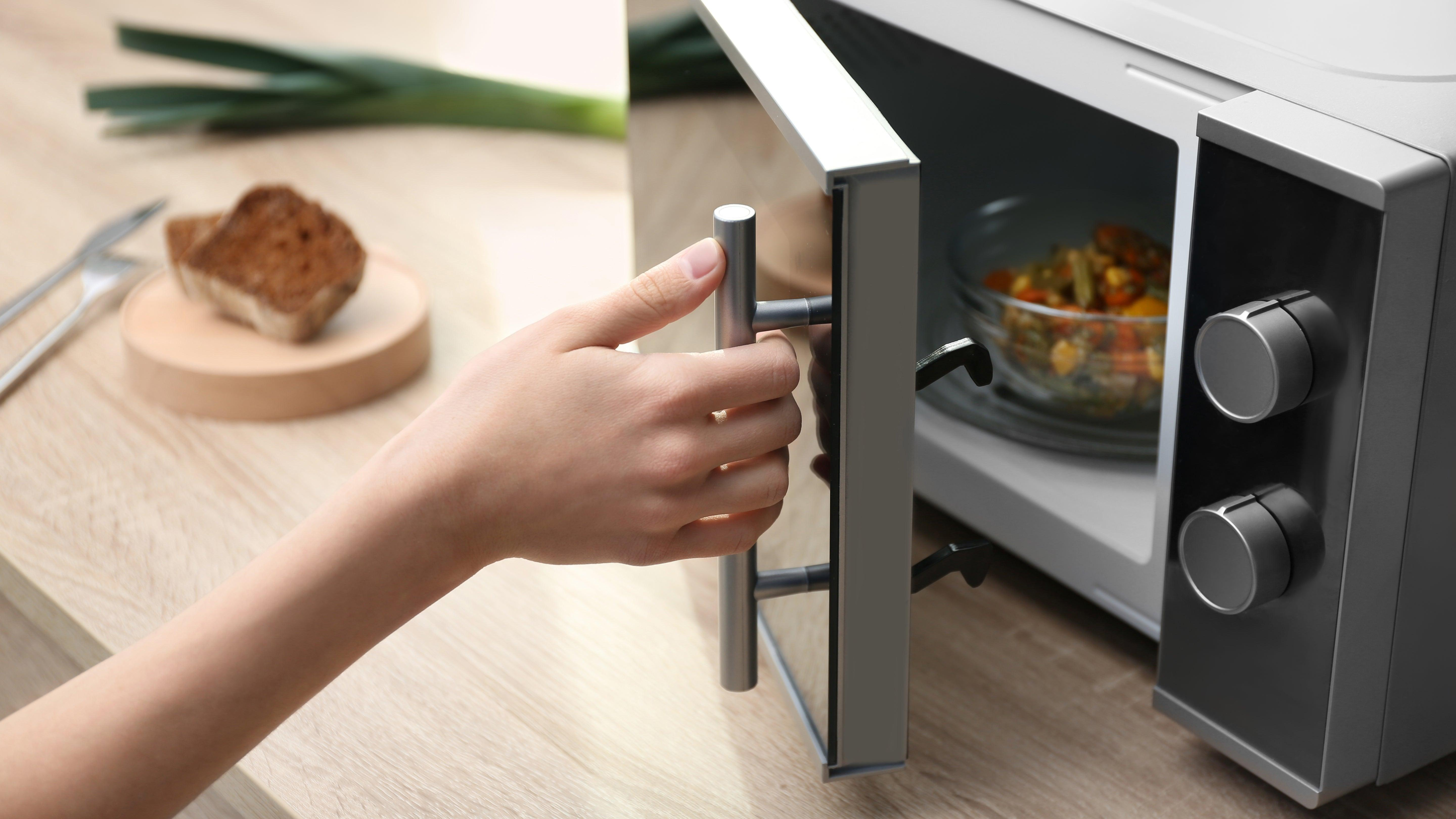Microwaving Your Veggies Is Great, Actually
The microwave is a perfectly good tool to cook your veggies with.
I love vegetables almost as much as I hate cooking them. Most home-cooked meals are an excuse to get some form of veggies in me (it can't always be meat and potatoes, after all), and if it isn't in the form of something fresh like a salad, I need to think on my toes when it comes to incorporating my bulky greens. And goddamn, I make things way too hard on myself sometimes, because the microwave can cook vegetables whenever I don't have the bandwidth to.
Lifestyle cooking magazines have set us all up for a life of mild disappointment. I look at all those gorgeous photo spreads of meals made from delicious and nutritious produce, then my eyes scan over to the recipe's 15-plus ingredients, many of which I don't keep in my kitchen, and I can't help but feel a little inferior. But you know what? To hell with that. The ability to prepare a great serving of greens is closer at hand than you think.
How to cook great tasting vegetables in the microwave
The microwave is a quick way to get hot and nutritious sides (or mains, even) on your dinner table. Invoking the microwave instantly makes some people start acting weird, and not every kitchen absolutely needs one, but when it comes right down to it, a microwave is just another cooking device in the kitchen—there should be no stigma attached to using one.
Microwaves are capable of cooking greens like spinach in minutes, as well as cruciferous vegetables like broccoli and cauliflower, and even starchy staples like potatoes and sweet corn. The prep work is easy; simply cut the veggies into fork-sized pieces (don't forget to wash them first!) and put them in a microwave-safe bowl with a tablespoon of water. Then cover the bowl tightly with microwave-safe plastic wrap and cook on full power for about 90 seconds. After the time is up, do a fork or knife check: If the tines of the fork or the tip of the knife easily slide through the veggie, you're done.
Otherwise, stir the vegetables in the bowl and add 30 seconds of microwave time, checking in on the food in 15-second increments. Delicate leafy greens like spinach cook faster, so you can start with 60 seconds of cook time rather than 90 seconds—check on them when the leaves turn a vibrant green and proceed accordingly.
Unfortunately, microwaves can vary greatly in wattage, so you might need to do a bit of trial and error to learn what your device's sweet spot is. Most prepackaged frozen vegetables—which are just as good as fresh veggies—have handy microwave instructions on them, and some can even be steamed directly in the bag.
Of course, on paper, microwaved veggies sound fairly boring. But that's where seasoning, sauces, and oil come in, and any pantry has at least a sprinkle of this or a squirt of that.
Keep an acid on hand (vinegar lasts forever), pick up any interesting spice blends next time you're at the grocery store (ranch powder, even, for those so inclined), and don't forget to stay stocked on cooking fats too. You know what flavors you like; I trust your judgment. (We've got a few condiment suggestions too.)
I am going to admit that since the effect of cooking vegetables in the microwave leaves you with a hot final product without extra qualities, like browning or crisping, you'll be a little lacking in certain textures and flavors. But that's not the point. I'm not recommending you cook all of your veggie dishes in the microwave, just the ones you need on your plate when you're not in the mood to cook—which, for me, is often. Or if you're mentally not up to the task, which is also okay.
So go ahead. Throw those veggies in a microwave-safe bowl, toss them in a touch of oil and some seasoning, and press those buttons. Microwave cooking counts as actual cooking, and don't let anyone tell you otherwise.
